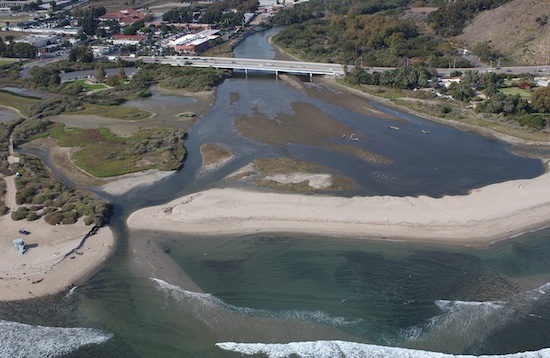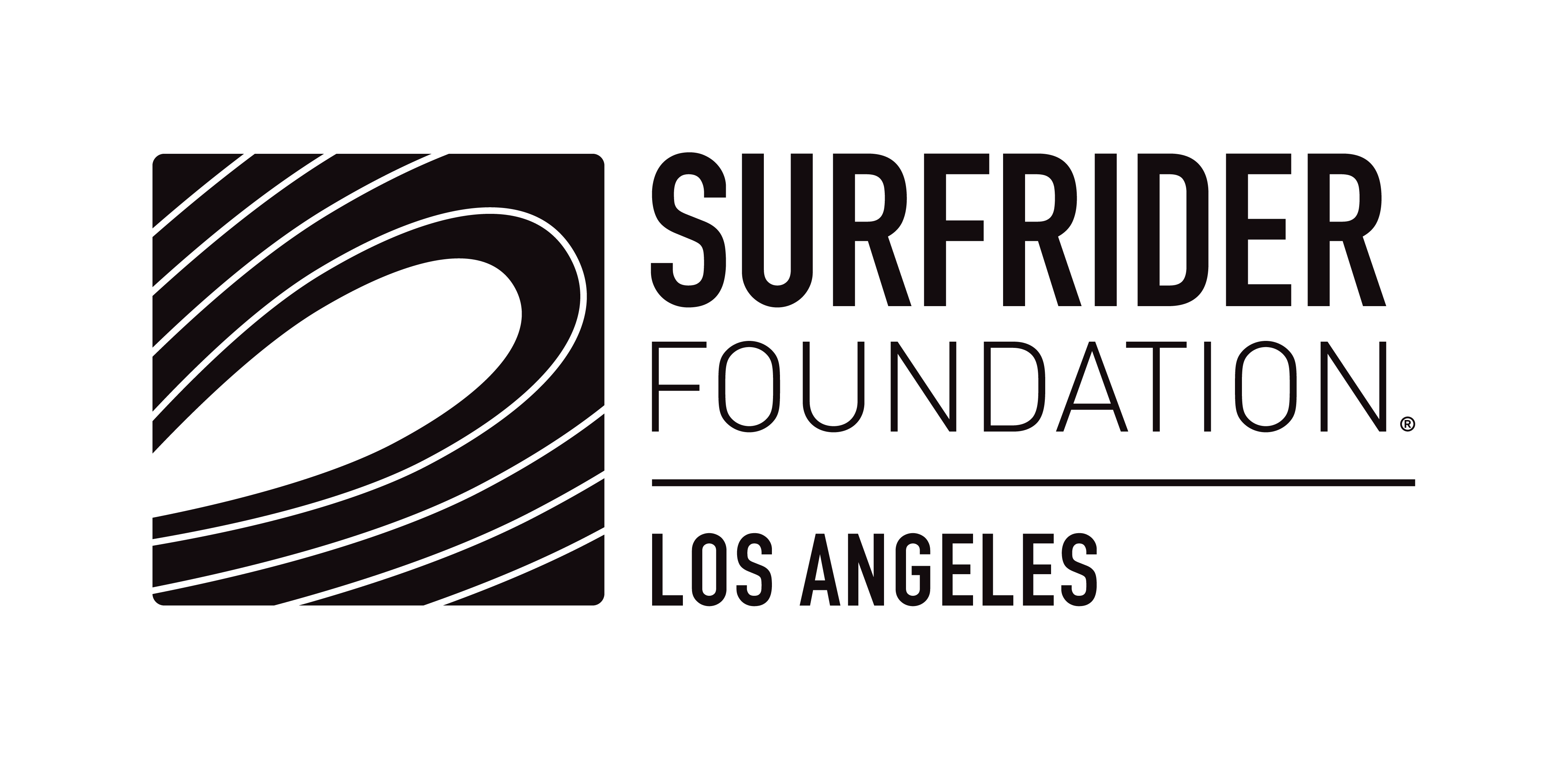
Malibu Lagoon Inlet Relocation
Our goal is to establish a management plan for inlet relocation so that inlet breach is mechanically moved to the West.
Photo: Malibu inlet breaching on the west side of the Lagoon in 2004. http://www.californiacoastline.org/,
The iconic surf at Surfrider Beach in Malibu is a classic river mouth point break that has been shaped by outflow and accumulation of sediment (rocks, clay and sand) over time. The flow of water and sediment are affected by watershed processes in the Malibu creek watershed, human influences and the interaction of the river mouth with the ocean. Those dynamics influence the quality of the waves at First, Second and Third Point at Malibu.
It is clear that there are large forces controlling the dynamics of the inlet breaching and sediment patterns in the surf zone that are both natural and man made. The list of impairments to natural watershed processes are long and include large volumes of sediment trapped behind Rindge Dam, areas of fill and development, and unnatural water flows. These larger forces are all playing a role in shaping the surfing conditions and in the patterns of the inlet breaching.
Many parts of the lagoon are already subject to human management, including creation of wetlands, creek side armoring, bridges, dredging, historic inlet breaching, wastewater discharge, and urban runoff.
Given that this system is already highly managed, we are advocating for additional management of the location of the inlet breach. Our goal is to establish a management plan for inlet relocation so that inlet breach is mechanically moved to the West. This plan is based on recommendations made by expert consultants.
There are several important benefits to moving the breach to the west. They include
- Improved surfing conditions
- Reduced erosion problems at the Adamson estate
- Improved public safety by improving lifeguard access to Third Point.
- Possible increase in tidal circulation to wetlands
Surfers are in agreement that having the inlet breach to the west, toward Third Point, is best for surfing conditions. If the system breaches to the west it will also alleviate some of the erosion problems at the Adamson House that have resulted in the construction and maintenance of a rock revetment. Further, a westward break may improve flow and circulation in the wetlands. From a biological standpoint, experts have told us that the timing of the breach is important with regard to sensitive aquatic species but the location of the breach is not as critical.
We believe that the surfing community, State Parks, the Santa Monica Bay Restoration Commission, LA County Beaches and Harbors, the Surfrider Foundation and others should work together to develop a plan that seeks to restore the natural processes that impact the surfing conditions, including where the inlet breaches. In the short term this should include efforts to actively control the location of the breach. It should also including longer term projects like removing the Rindge Dam to improve sediment and cobble transport to the beach.
